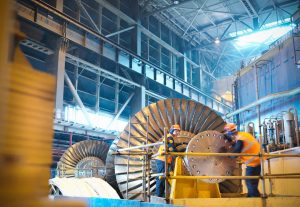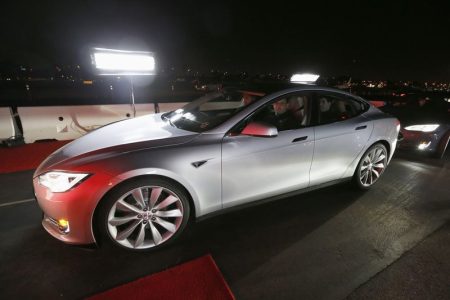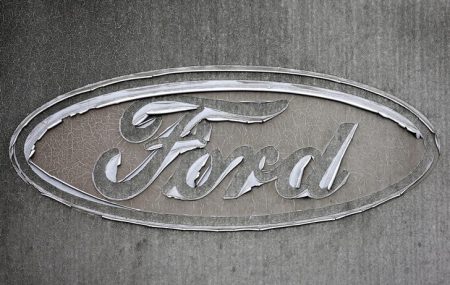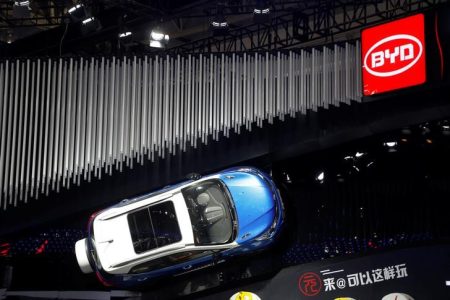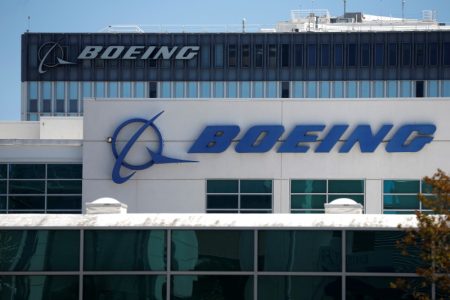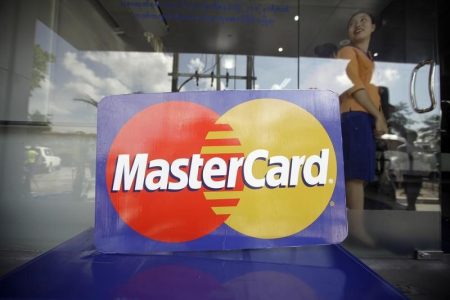© Reuters.
Capital Product Partners (NASDAQ:) unveiled its Q3 2023 financial results, highlighted by a net income of $17 million and total revenue of $95.5 million, showing a significant increase from the same quarter last year’s $71.9 million. The company also announced a strategic acquisition of 11 new LNG carriers in a $3.1 billion deal, which is expected to position it as the largest U.S. listed operator of two-stroke LNG carriers.
Key takeaways from the earnings call include:
- CPLP’s Board of Directors declared a cash distribution of $0.15 per common unit. Total expenses for the quarter were $51 million, with vessel operating expenses amounting to $22.3 million.
- The company’s current fleet charter coverage stands at 100% for 2023 and 2024, with a contracted revenue backlog of over $1.7 billion.
- The acquisition of 11 new LNG carriers will be funded through a $500 million rights offering, commercial debt, and an unsecured seller’s credit provided by Capital Maritime. The rights offerings are set to close on December 15th.
- Post-acquisition, CPLP expects to have a modern fleet of 18 LNG vessels with an average firm charter duration of 6.5 years.
- The company plans to divest from its remaining container vessels, which have an estimated net asset value of over $400 million. The divestment is part of a broader transformation into a corporation, with the company set to change its name to Capital New Energy Carriers L.P.
- CPLP expects the acquisition to increase its annual pro forma EBITDA by 153% to $614 million and decrease its LNG fleet age to 3.2 years with assets that have a 35-year useful life.
- The company aims to maintain its common unit distribution guidance of $0.15 per quarter, despite a higher unit count.
The company’s strategic transaction comes amid expectations of a 70% increase in global LNG market capacity by 2030, largely driven by new production in the US Gulf. This, coupled with a deficit in shipping capacity and a need for fleet renewal, positions CPLP’s acquisition to potentially capture significant market share.
In addition to the acquisition, CPLP is planning a transformation into a corporation, a process expected to be completed within six months. This change, according to CEO Spyros Leoussis, is anticipated to bring the company’s trading in line with its peers. The company is currently trading at 45% of its pro forma NAV.
The company is also considering a new capital allocation strategy and expects to move to a floating distribution or dividend policy. The CEO expressed confidence in the company’s LNG fleet, customer base, and cash flow generation potential, reiterating the company’s aim to create long-term shareholder value.
InvestingPro Insights
Capital Product Partners (CPLP) has been operating with a significant debt burden, which is a point of concern. However, strong earnings have allowed the company to maintain dividend payments for 17 consecutive years, a fact that might comfort investors. The company has been successful in maintaining impressive gross profit margins, with the last twelve months as of Q2 2023 showing a 71.02% gross profit margin.
InvestingPro data reveals a low Price / Book ratio of 0.43 as of Q2 2023, indicating that the company’s stock might be undervalued. The company also has a low P/E ratio of 2.88, suggesting that the earnings yield of CPLP is quite high. Despite these positive indicators, it should be noted that the company has been quickly burning through cash, which might be a potential red flag for investors.
InvestingPro offers additional tips and insights for investors interested in CPLP and other stocks. With a wealth of real-time data and expert analysis, InvestingPro can help investors make informed decisions and maximize their returns.
Full transcript – CPLP Q3 2023:
Operator: Thank you for standing by, and welcome to the Capital Product Partners Third Quarter 2023 Financial Results Conference Call. We have with us Mr. Jerry Kalogiratos, Chief Executive Officer; Mr. Spyros Leoussis , Chief Commercial Officer; and Mr. Nikolaos Kalapotharakos, Chief Financial Officer of the Company. At this time, all participants are in a listen-only mode. There will be a presentation followed by a question-and-answer session. [Operator Instructions] I must advise you that this conference is being recorded today November 13 2023. The statements in today’s conference call that are not historical facts, including our expectations regarding cash generation, equity returns and future debt levels, our ability to pursue growth opportunities, our expectations or objectives regarding future distribution amounts, capital reserve amounts, distribution coverage, future earnings, capital allocation as well as our expectations regarding market fundamentals and the employment of our vessels, including redelivery dates and charter rates, may be forward-looking statements as such as defined in Section 21E of the Securities Exchange Act of 1934 as amended. These forward-looking statements involve risks and uncertainties that could cause the stated or forecasted results to be materially different from those anticipated. Unless required by law, we expressly disclaim any obligation to update or revise any of these forward-looking statements, whether because of future events, new information, a change in our views or expectations to conform to actual results or otherwise. We assume no responsibility for the accuracy and completeness of the forward-looking statements. We make no prediction or statement about the performance of our common units. I would now like to hand over to your speaker today, Mr. Kalogiratos. Please go ahead, sir.
Jerry Kalogiratos: Thank you, and thank you all for joining us today. As a reminder, we’ll be referring to the supporting slides available on our website as we go through today’s presentation. In addition to our quarterly earnings, we announced today an important strategic transaction for the partnership. In the interest of time, we will go through a shorter than usual presentation of our quarterly earnings, and we’ll then move on to the transaction and what it all means for Capital Product Partners. Starting with slide three and the partnership’s financial performance, net income for the third quarter of ‘23 was $17 million. Our Board of Directors has declared the cash distribution of $0.15 per common unit for the third quarter of ’23. The third quarter cash distribution will be paid today November 13 to common unitholders of record on November 6. Finally, following the Cape Agamemnon delivery to hear new owners last week, the partnership’s current fleet charter coverage for both 2023 and ‘24 stands at 100% with the remaining charter duration corresponding to 6.5 years and contracted revenue backlog of more than $1.7 billion. Now turning slide four, total revenue for the third quarter of 2023 was $95.5 million, compared to $71.9 million during the third quarter of ‘22. The increase in revenue was primarily attributable to the revenue contributed by the four new building vessels delivered to the partnership between fourth quarter of ‘22 and the second quarter of ‘23, as well as the increase in the daily rate earned by two of our LNG carriers since September 2022. Total expenses for the third quarter of ‘23 were $51 million, compared to $40.4 million in the third quarter of ‘22. Total vessel operating expenses during the third quarter of ‘23 amounted to $22.3 million, compared to $17 million during the third quarter of last year. The increase in vessel operating expenses was mainly due to the net increase in the average number of vessels in our fleet and costs incurred during the scheduled maintenance of certain of our ships. Total expenses for the third quarter of ’23 also include vessel depreciation and amortization of $21.9 million, compared to $16.2 million in the third quarter of last year. The increase in depreciation and amortization during the third quarter of ‘23 was mainly attributable to the net increase in the average size of our fleet. General and administrative expenses for the third quarter of ‘23 amounted to $2.6 million, compared to $2.8 million in the third quarter of ‘22. Interest expense and finance costs increased to $27.8 million for the third quarter of ’23, compared to $14.9 million for the third quarter of last year. Decrease in interest expense and finance costs was mainly attributable to the increase in the partnership’s average indebtedness and the increase in the weighted average interest rate to 6.5% from 4.4% in the third quarter of ‘22. The partnership recorded net income of $17 million for the quarter, compared to net income of $11.5 million that is excluding the gain on sale of vessels we recorded in the third quarter of last year. Net income per common unit for the quarter was $0.84 compared to $0.57 per common unit in the third quarter of last year, once again excluding the gain on sale of vessels recorded a year ago. On slide five, you can see the details of our operating surplus calculations that determine the distributions to our unitholders, compared to the previous quarter. Operating surplus is a non-GAAP financial measure, which is defined fully in our press release. We have generated approximately $41.7 million in cash from operations for the quarter before accounting for the capital reserve. We allocated $34.4 million to the capital reserve, a decrease of $0.6 million, compared to the previous quarter, due to the net decrease in the rate of amortization of our debt. After deducting to the capital reserve, the adjusted operating surplus amounted to $7.2 million. On slide six, you can see the details of our balance sheets. As of the end of the third quarter, the partner’s capital amounted to $664.5 million, an increase of $26.1 million, compared to $638.4 million as of the end of last year. The increase reflects net income for the nine months ended September 30, other comprehensive income of $2.1 million relating to the net effect of the cross currency swap agreement, we designated as an accounting hedge, and the amortization associated with the equity incentive plan of $2.8 million, partly offset by distributions declared unpaid during the period in a total amount of $9.2 million and the cost of repurchasing our common units and our unit repurchase program for an aggregate amount of $4.1 million. Total debt increased by $303.1 million to $1.6 billion, compared to $1.3 billion as of year-end 2022. The increase is attributable primarily to the drawdown of a total of $392 million to finance new vessel acquisitions, partly offset scheduled principal payments for the period of $64 million and the early prepayment in full of one of our facilities for an amount of $23.4 million. Total cash as of the end of the quarter amounted to $108.5 million, including restricted cash of $11.7 million, which represents the minimum liquidity requirements under our financing arrangements. At this point, I would like to move to the second part of the presentation and in particular to slide number eight. I’m very pleased to talk about today what we consider a milestone transaction for the partnership and one that I believe will propel Capital Product Partners to a new chapter after 16-years of public presence as an MLP. I would like to start with the decision of the board to change the partnership’s name. The new name, which we expect to take effect by year-end, is Capital New Energy Carriers L.P., and it will come with a new ticker symbol CNEC. I’m starting with this symbolic move as it signifies that what we’re aiming to do here is more than an asset transaction. It is a transformation of the partnership to reflect our new focus primarily on LNG shipping, but also the wider gas business related to the energy transition and the intention as part of this transaction to move away from the MLP model and convert into a corporation. This strategic transformation will be underpinned by the acquisition of 11 latest generation, two-stroke LNG carriers in a $3.1 billion transaction, with delivery starting from later this quarter and up to March 2027. The first five vessels delivering this and next year have medium to long-term charters in place, with revenue weighted average frame period of 7.5 years to highly reputable counterparties with a total of over $1.4 billion in contracted revenues. Once all vessels have been delivered, we expect CPLP or CNEC, if you prefer, to transform to the largest U.S. listed operator of two-stroke LNG carriers, compared to the current fleet of other U.S. listed companies, and one of the largest U.S. listed shipping companies by enterprise value. Importantly, together with the focus on the LNG business, CPLP has committed to the opportunistic divestment from its container vessels. While has secured the right of its refusal on two very large ammonia carriers, and two liquid CO2 carriers, which are expected to play significant role during the energy transition together with . Now turning to the next slide. You can see how we expect to fund this strategic acquisition. Total vessel acquisition cost is $3.1 billion, which translates roughly to 8.4 times full-year EBITDA for the 11 new LNG carriers. This estimate is based on the employment secured for the five vessels on a full-year basis and an assumption of $100,000 per day for the remainder six, in line with the current and medium to long-term period market. We believe the acquisition to be attractively priced in view of the uniqueness and size of this fleet comprising only latest generation MEG LNG carriers the tender and the quality of the contracted cash flows, as well as the delivery dates of the vessels and the particular of the open vessels, which coincide very well with the next phase of significant liquefaction capacity coming online from 2026 onwards as we will discuss later. The acquisition will be funded by rights offering of $500 million, which is open to all our unitholders. In addition to commercial debt and an attractively priced $220 million unsecured seller’s credit provided by Capital Maritime, to ensure that the transaction is fully capitalized even without the sale of any container assets. Turning to the next slide, we describe in more detail the $500 million rights issue and the seller’s credit. We chose the rights issue path because we wanted to make sure that all existing unitholders had the right to participate in this transformative transaction. Capital Maritime is backstopping 100% of the transaction without any fee at an attractive price of a minimum of $14.25, which translates into a $9.6 premium to the last closing price. Holders of common units as of record date of November 24th will receive the right to acquire up to 1.7 units for its unit they hold. The closing of the rights offerings expect to take place on December 15th. As far as the seller’s credit is concerned, it is attractively priced at 7.5% all in. It is unsecured and has a maturity in June 2027. We believe that the Capital Maritime support is an important part of this transaction and demonstrates Capital Maritime’s continued alignment with the long-term success of the partnership. In the appendix on slide 24, you can find more details with regard to the deal structure and timing of payments. On the next slide, you will find the 11 vessels together with the breakdown of total contracted revenues and average day rate for each year, as well as our deliveries. These are old sister vessels built or under construction and Hyundai (OTC:) Shipyard in South Korea, the largest ship builder in the world. These three very high specification vessels represent the latest generation of propulsion containment system, re-liquefaction plant and energy saving technologies in LNG shipping. Importantly, the propulsion arrangement with MEGA low pressure engines and sub-generators ensures the reduction of methane sleep by 50% even compared to first generation low pressure two-stroke vessels and close to 90%, compared to TFDE vessels. The first vessel, which was delivered from Hyundai to Capital Maritime at the end of October is on a three-year high lucrative charter to Qatar Energy and Trading, the Axios II is expected to commence a bareboat charter to Bonny Gas and Trading in the first quarter of ‘25 and in the meantime, we expect here to be fixed for a 12 to 15-months-time charter before year end. The [Indiscernible] which delivers in May ‘24 is fixed on a 10-year charter Tokyo gas, a Japanese utility, similar to the Apostolos that follows thereafter, which is fixed to JERA. Finally, the Aktoras will also enter into seven-year bareboat charter in July of ‘24 with Bonny Gas and Trading. The remaining six vessels are not yet committed and have highly attractive delivery dates as today’s shipyards offer typically capacity in the second-half of 2027 onwards. Turning to the next slide. After the delivery all 11 additional ILNG carriers, Capital will have a very modern fleet of 18 to stroke LNG vessels, the largest in the U.S. public markets as of this point, with 6.5 years of average firm charter duration that can extend to 9.6 years including options. I will now hand over the floor to Spyros Leoussis, our Chief Commercial Officer, who will talk about the prospects of the LNG market and especially from 2026 onwards, where we have the most exposure. Importantly, Spyros will also explain why we believe that a two-stroke vessels like ours will gave even more traction and value going forward as environmental regulations and market based measures become more prevalent.
Spyros Leoussis: Thank you, Jerry, and good morning, everybody. This is indeed a very exciting transaction from where I’m sitting. As you know, and you can also see on slide 15, LNG is prevailing as the main supply source of natural gas as the ability to move natural gas in the form of LNG beyond the constraints of the pipeline not only gives producers and consumers more flexibility, but has become increasingly more important due to geopolitical issues. Hence, LNG shipping is an integral part of the value chain. And with this transaction, CPLP will become one of the largest owners worldwide of more than two-stroke LNG vessels. Then to the next slide, the global liquefied natural gas market capacity is expected to increase in the coming years by 70% by 2030. The chart that you see on this slide refers to the global LNG production capacity, which is expected to exceed 750 million tons annually in 2030, up from 465 million tons in 2023. The increase in liquefaction involves projects under construction that have already received the final investment decision. The crucial element for the prospects of the LNG shipping market is that most of the new production will be installed in the U.S. Gulf with the main buyers located in the Far Eastern Europe, increasing the demand for LNG shipping due to higher ton miles. 2034 so far has been another very strong year in terms of FIDs for newly construction project with next decade Sempra and Vessel Global projects taking FID amounting to additional 50 million tons per annum of LNG from 2026-’27 onwards. We expect the trend for FIDs to continue as a number of projects in the U.S. are reaching maturity and government support around the world for new projects has been an important catalyst. We expect the new players and their offtakers to drive the demand for new vessels when our ships — when our open ships will be delivering from their yard. On the next slide, slide 15, we’ll discuss the supplier of LNG carriers. Here, you can see the composition of the global LNG fleet. The LNG fleet on the water stands at 736 vessels and the order book is around 300 vessels. The order book to fleet ratio is slightly lower than the peak of 52% of last January as newbuilds deliver and order inflow slowdown. From the total of about 300 new vessels, only 29 vessels currently are open between now and 2028. Equivalent to 10% of the existing order book the vast majority of waters are committed to projects like Qatar Expansion, LNG Canada and others. Worth noting that the capital open positions will represent around the fifth of the market for uncommitted vessels. Position us well — positioning us very well at the time when we expect demand for these vessels to accelerate. Motor vessels like the ones under the acquisition are larger and more economical, incorporating significant changes in propulsion technology and LNG tank construction. At the same time, as emissions regulations tightened with EXI, CII and other regulatory initiatives, and charters are placing an increased focus on ESG and specifically carbon dioxide emissions equivalent. Steam and TFDE vessels will become even less competitive going forward with two small vessels commanding a significant premium, both in terms of charter rate and utilization. The older, smallest same turbine fleet is expected to be gradually phased out either through scoping or repurposing installers and electrification project. We should point out that the new vessels are equipped with a MEGA propulsion arrangement, which allows for a low gas supplies pressure and is better suited for use of [Indiscernible] of gas as a fuel, while at the same time having lower capital expenditure, operational expenditure and NOx emissions, non-current generation engines. The key driver behind the popularity of the new arrangement is the exhaust recycling system, which improves methane sleep by up to 50% as Jerry mentioned previously when combined with self-generated. We’ll discuss more on the benefits of the new vessels in the following slide. Looking a bit more into the unit freight cost calculation, and the relevant differential between the different type of vessels. As we mentioned above, the key drivers for the differential are more efficient propulsion with savings up to 100 tons per day of fuel, the largest size of vessel 174,000 cubic meters vessels, 145,000 or 160,000 cubic interest, the improved containment system resulting into lower boil off for 0.03 versus 0.15 daily evaporation of cargo. The lower long-term maintenance costs due to simpler propulsion arrangement, and from 2024, the tightening of emissions regulations with the monetization of carbon dioxide and methane. On the first graph, on the right, we have calculated the equivalent daily differential for a U.S. [Indiscernible] between the two-stroke vessel and the steamship or the DST. The main parameter is a commodity price, and as we can see, in a $10 per MMBtu environment, the daily difference to a DFT exceeds $30,000 per day, while to a steamship is more than double to that exceeding $70,000 per day. We’re noting that today’s LNG [Indiscernible] price is around $17 per MMBtu. On the next graph, we have calculated the emission profile for its type of ship. With the two-stroke vessels having less than half of the emissions, reducing significantly the APS cost for the charter. For the U.S. EU trade post-2026, 100% of the emissions will need to be accounted for with emissions — with emission allowances. A steamship will have to incur an additional cost versus our vessels of around $17,000 per day, assuming an $80 per ton of CO2. Based on the unit freight cost and emission deferential, we expect that new vessels will be in high demand for at least the next decade. As fleet renewal processes, while at the same time, they will be able to command a significant premium corresponding to the efficiency gains that charter will record when utilizing it. This is already apparent today as we have a clear 3 Tier market, but with a gradual increase in pressure on older vessels from EXI and importantly from ETS, we expect to see even larger premium to be captured by two vessels like ours. The next slide provide us with a snapshot of the market outlook. The main two drivers for healthy LNG freight market and the shipping capacity required to transfer the new LNG that will come online from the need for fleet renewal. With a conservative assumption that only vessels above 50-years will [Indiscernible]. The shipping balance for 2026 is in deficit by seven vessels, while for 2027, this will drop to 57 vessels in additional requirement. While we expect that part of this demand will be covered by new orders, the current CPR capacity in both Korea and China cannot support the acquired growth, leaving the market short of vessels and adding significant value to our 2026 and 2027 open positions. Overall, we will aim to be opportunistic in our approach as to when we will fix these vessels depending on what we see in terms of market dynamics. While in the past, we have six vessels only a few months after contracting them from the shipyard, the majority of the vessels have been fixed closer to delivery in order to capitalize on the scarcity value. In addition, in our chartering strategy, we will make sure that we keep target expirations in order to maintain exposure to the market and reduce market cycle risk. This is all from me. I will now hand the floor over to Jerry. And be happy to answer your questions later.
Jerry Kalogiratos: Thank you, Spyros. Now turning to slides number 18 and the pro forma impact of the 11 fleet acquisition. It is clear that this is a transformative transaction across all metrics. Importantly, the LNG fleet contracted revenues for the partnership increased by 127% to $2.5 billion providing strong cash flow visibility and secured income going forward. Take into account also our container fleet, total pro forma contracted revenues would amount to $3.1 billion. Turning now to pro forma EBITDA, assuming for the 11 LNG carriers full-year employment under their firm charters and a $100,000 per day for the six and fixed vessels in line with the current period market. The estimated annual pro forma EBITDA would increase by 153% to $614 million, when combined with the last four quarters EBITDA of the existing fleet. In the same manner, taking the last four quarters operating surplus of [Indiscernible] CPLP, at adding the incremental EBITDA from the 11 LNG carrier on a full-year basis less debt amortization and interest cost generated 206% decrease in free cash flow generation of the partnership. And while we expect to have divested from a number of container vessels by the time our full LNG fleet delivers, these pro forma numbers give you a sense of magnitude with regard to the impact of the 11 LNG carrier acquisition on our future cash flow generating capacity. Please also refer to the presentation appendix on slide 26 for the assumptions behind these numbers. Finally, our LNG fleet age is expected to decrease to 3.2 years with assets that have 35-year useful life. Overall, we believe that this transaction builds further on our existing focus on long-term cash flow visibility, but also provides attractive exposure to a strengthening LNG market with best-in-class modern vessels. Moving to the next slide. As we have discussed in previous calls, CPLP has been trading over the last few quarters at the large discount to NAV. Despite value creating transaction, such as the Diamond S Spinoff and a very timely entry into the LNG market funded with no additional equity capital. This picture has not changed materially. We believe that moving away from the diversified fleet model and transforming the fleet is one of the largest, if not the largest pure play LNG and energy transition gas company EU U.S. public markets, and by converting the partnership into corporation with customary corporate governance and the capital allocation policy, we should be able over time to trade in line with our peers, which could translate substantial upside to our current unit price levels. This can be seen more clearly on the next slides where we describe the pro forma NAV for the acquisition on a per unit base after the equity offering assuming an issue price of $14.25, which is based on recent charter attached third-party appraisals that we received to our existing fleet as well as debt, cash and working capital as of the end of third quarter of 2023. Adjusted for the charter attached value of the 11 LNC carrier’s fleet in line with third-party appraisals on a fully delivered basis and the estimated debt and cash adjustments required for their acquisitions. At the current unit price levels, CPLP is trading at 45% of its pro forma NAV, compared to 100% of its closest peer Flex (NASDAQ:) LNG. As we execute against our newly set out business model over the next few quarters, we believe that we should be able to increasingly close this gap benefiting all our unitholders. Turning to the next slide. The partnership has among others committed to divest from its remaining container vessels, whose charter attached, the latest fleet appraisal is close to $900 million, which translates to an estimated net asset value north of $400 million. While we see the container charter market increasingly under pressure, which has and this would also further affect asset values going forward, a large part of our container fleet valuation is protected as all of our container vessels have medium to long-term charters in place with their value being underpinned by the cash flows of these charters. Hence, we will opportunistically evaluate the potential sale of its assets against its cash flow and our expectations with regard to residual value, compared also to other opportunities in the LNG and wider gas markets. Finally as we saw earlier CPLP will have a significant cash flow generation potential after this transaction is completed. Despite the materially higher unit count, after the rights issues completed, the common unit distribution guidance of $0.15 per quarter remains attained. As the company over the next few months converts into a corporation, we intend to also communicate a new capital allocation strategy. Overall, and subject to the final decision of the board, charter markets, financing and refinancing opportunities, as well as the timing of the container sales and availability of other growth opportunities, the expectation is to move to a floating distribution or dividend policy going forward, which is expected to be defined as a percentage of the income and cash flow generation of the company. This is to be balanced with allocating capital to growth opportunities in the LNG and Energy Transition markets as well as repaying debt. Overall, I should stress that I’m personally very pleased to announce today the transformative transaction and I hope that our existing unitholders will take advantage of the rights issue to participate in this journey of taking the partnership to its next chapter with the aim of creating long-term shareholder value. I’m confident that our exceptional LNG fleet, our high quality customer base, our contracted cash flows and are uniquely positioned LNG and Energy Transition Shipping opportunities we make Capital New Energy Carriers bellwether in the industry. And with that, I’m happy to answer any questions you may have.
Operator: Thank you. At this time we’ll conducting a question-and-answer session. [Operator Instructions] Our first question comes from the line of Ben Nolan with Stifel. Please proceed with your question.
Ben Nolan: Thanks. Hey, Jerry. First of all, congratulations. I know this is — you guys have been trying to do something transformative for a long time, this obviously is that. So I have a couple of questions. First of all, I’m curious on how you came to the valuation of the assets and I ask because I appreciate that there were third-party evaluations, but it seems like relative to at least, you know, some of the market levels that we’ve seen for new builds, et cetera, it’s a little elevated above that. Curious if you could just talk to that a little bit?
Jerry Kalogiratos: Thank you. Thank you, Ben. The prices were — and the valuation were, of course, negotiated on behalf of the partnership by the Conflict Committees, which comprises only independent directors and were advised by Evercore and Fried Frank. The discussions and negotiations around the acquisition price were based on various metrics, but that includes third-party charter attached appraisals. And of course, cash flow multiples, cash flow valuation and other considerations, and parameters, around the transaction. But I think taking into account the contracted cash flows of the five vessels. The fact that seven out of the 11 vessels are delivered ex-yard. So [CNBC] (ph) is taking the carry cost of, paying pre-deliver installments and whatnot. I think you’ll find that the evaluation is quite fair. I think the best indication of that is that the EBITDA multiple is around 8.4 times, and that takes to account the locked in charters and the $100,000 market for the remaining six ships. Even if you think it’s $95 or $105, of course, this does not change materially, which I think as a multiple of cash flows, this is quite attractive. And we haven’t seen many transactions around these levels. So I think you have to take, first of all, take into account that these are charter attach valuations. Many of the charters that are in place highly lucrative. We cannot disclose the exact rates, but I think if you look at the revenues that we list on the relevant slide, you can understand that these are quite lucrative charters. And you’ll also see that two of them are bare boats, right? So they don’t have OpEx. So looking at the cash flow, the fact that this — that seven out of the 11 vessels are being — are delivered ex-yard. I think that should make a big difference. Today, if you go to a shipyard, they will quote you for a second-half 2027 vessel $260 million with probably 20% upfront and then 10% probably after six or 12 months. If you and then if you continue to look at speed delivery installments cost plus the supervision cost at the labor cost vessel in 2027, ‘28 in the current interest rate environment is probably well north or close to $300 million.
Ben Nolan: Yes. And, again, I sort of appreciate that. As it relates to the cash flow side, I think $100,000 as you said is certainly reasonable. How are you thinking about actually the timing of locking those in? Both for the newbuilds and then there’s the one that has a little bit of a shorter contract. When do you anticipate being able to, again, have cash flow visibility or certainty associated with those charters?
Jerry Kalogiratos: Spyros, would you would you like to take this one?
Spyros Leoussis: Well, yes. Hi, Ben. I think, you know, currently, we have discussion with charters regarding, our vessels on a regular basis. I mean, the — we see, you know, there are many — there are a few tenders out there, which we participate. But I think as we mentioned earlier in the slides, I think the important part of our strategy so far has been to capitalize on the possibility of supply of vessels, nothing that what we aim to do [Indiscernible]. We think that — this was higher [Indiscernible] vessels on the delivery [Indiscernible] line off for a very favorable LNGC market aligning with the new project structure. And as we said previously, I think there are two prospective charters. The one is the new project front of their offtake that we need to be covered with new vessels. But we are also focusing on big replacement projects were effectively the big charters out there who have a fleet of, steamed turbine vessels. And with the new ETS regulation coming into play, I think there will be a huge drive for replacing those vessels going forward.
Ben Nolan: Okay. And then, and then lastly for me, just as it relates to financing and maybe broadly speaking, assuming the debt that you lay out here, it would seem as though the company at this point soon to be no longer partnership with the company. To me, it looks like it’s relatively highly levered. Obviously, to the extent that there’s a healthy component of equity in the container shipping business and that can be monetized to delever the balance sheet then it gets there. But how are you thinking about leverage? Or how are you thinking maybe about timing of the sale of the container shipping fleet in order to reduce some of that debt?
Jerry Kalogiratos: So in terms of financing, we are at various stages of commitment, especially for the vessels that deliver next year. And overall, at fairly attractive terms, I mean, you should expect somewhere between 70% to 75% of the acquisition price to be financed with a margin well below 200 basis points probably closer to 119. Some of it might have fixed — some fixed debt component as we are looking at certain financing arrangements like [Indiscernible]. But I think we have a pretty good idea as to how we will finance these vessels. Most of them have either very advanced term sheets or commitments. And overall, I think as we have shown in the past, we have a long track record of, using diversified sources of financing over the years. I mean, from European commercial beds, Chinese and Japanese resource, the [Indiscernible], Asia Pacific Banks. So I think we will make sure that we will take advantage of this long tenure charters to push down cost of debt as much as possible. And there is also the attractive components for the financing that — which we is the $220 million Unsecured Credit Facility, which is effectively if you want an insurance provided by a Capital Maritime to make sure that even if the container sales do not happen overnight, there is always liquidity to execute. But coming back to your point with regard to leverage there is — we have nine unlevered container ships sitting on balance sheet. And we are going to look at the market to start divesting from these assets. I think we’re going to be opportunistic we have a very good track record in the S&P market overall. And one does not want to rush this. But the fact that we also have, mostly medium to long-term charters on these containerships means that value is partly locked in. So I think it will be — we will opportunistically approach the market there is no hurry. I think how it exits in shipping, typically do not bode well. And we will compare what we can get in the S&P market compared to that cash flow. And of course, other opportunities, all the opportunity costs for that cash in other segments, and we will take those decisions. But we have — I think, both in terms of LTV today, our LTV stands sort of net LTV, it’s a sort of 50%. And we have quite a bit of room as not only our containerships are under levered, but also a lot of the original LNG carriers have quite a bit of low levels of debt.
Ben Nolan: Alright. Well, I appreciate you taking my questions. I’ll turn it over. Thank you.
Jerry Kalogiratos: Thank you, Ben.
Operator: Thank you. Our next question comes from the line of Omar Nokta with Jefferies. Please proceed with your question.
Omar Nokta: Thank you. Hey, guys. Good afternoon.
Jerry Kalogiratos: Hi, Omar.
Omar Nokta: Hi, how are you doing? Not much really for me. I think it was pretty much you spelled it up pretty clearly, I think in the release and the presentation and just now in the Q&A Ben. Maybe just a couple of follow-ups, maybe perhaps on the sale of the containerships. Did want to ask, you said you’ll take your time. There’s no rush, which I agree with. We’ve seen in the past rush deals don’t typically work out, or perhaps you’ll make money on the table. When you think about the opportunity to sell the containers, how can you envision that as in — do you see — could this be sort of like an could it be an M&A style transaction? Is there interest you think on the part of, say, other containership owners looking to acquire this type of fleet that comes with contracted cash flow. Could you see an M&A deal evolving or is it more, you think, just a sort of a drip feed driven purchase market style, series of sale?
Jerry Kalogiratos: I think we will definitely be open to all kinds of transactions. It could be a vessel by vessel and as we know very well to do or it could be a bigger transaction involving not just cash. We will definitely be open, but we will of course look at every transaction in its merits. Overall, what you see is that both liner companies, as well as containership owning companies have done obviously very well over the last couple of years. And as such, there is additional liquidity. Our assets are very attractive assets. I mean, our 15,000 TEU containers today, if you wanted to build them, probably the value could be closer to $150 million, $160 million. So there is the replacement costs that really led the generation ships with 10-year charters to very good names. Our 5000 white beam ships are very much in demand. Our 10,000 TEU ships, which again have long-term charters. We have recently modified their bow and installed the scrubbers and they have good cash flow. So there’s quite a lot of quite attractive assets. And we think that they are out a number of different players with different motives that might want to invest in those type of assets. But to your question, absolutely open as to how we will do it and when we will do it.
Omar Nokta: Okay. Thank you. And then maybe just a follow-up on the LNG contract market and Spyros went over, you know, plans on, being able to fix out and obviously these are good shifts. I just wanted to ask kind of in terms of liquidity in the term market as it is now then you start have plenty of time until the delivery of these ships. But just kind of if you can give a sense of what does the liquidity look like right now in the term charter market for LNG vessels, especially new buildings. It does sound like perhaps a year ago, there was a good amount of activity. Things perhaps have slowed, but just wanted to get your sense on what does the liquidity look like right now in the term market?
Jerry Kalogiratos: Spyros, you want to take that?
Spyros Leoussis: Yes. Hi, so, I think that, you know, last year, we saw liquidity on the back of a number of, spec open vessels that were shipping the market at the same time. Now I think the number of those open vessels, it’s going down and states we are probably talking ‘26, ‘27. I think up to now, we’re still competing against the project ships, meaning vessels that will place an order specifically for the project that we’ll be shipping. I think we’re going forward. We would probably — we expect to see increased liquidity. As I said, the main driver for that will probably be replacement — fluid replacement project. A lot of servers, especially in the Far East, which have their fleet is consistent, you know, consists predominantly from all the generation ships. And I think these are probably the guys that would create a lot of demand for new vessels. Liquidity in the market in terms of supply. As we mentioned, there are not a lot of ships that will — that are great to the charter. I think there will be — we’ll probably have a spillover in the [DSDs] (ph). So affecting the two-stroke markets taking into let’s say pushing a bit the DSD market as well. Q – Omar Nokta Okay, thank you. That’s it from me, Spyros and Jerry. Thank you and congrats on the transaction.
Jerry Kalogiratos: Thank you, Omar.
Operator: Thank you. Our next question comes from the line of Liam Burke with B. Riley Securities. Please proceed with your question.
Liam Burke: Yes. Thank you. Hi, Jerry. Hi, Spyros.
Jerry Kalogiratos: Hi, Liam.
Liam Burke: Jerry, how much do you do you anticipate any significant hurdles on converting from an MLP to a traditional corporate structure?
Jerry Kalogiratos: Not really. I think it’s only a question of capital maritime, the GP and the special committee of the board now sitting down to negotiate the terms and the form that the corporate governance will take going forward. Both sides have committed to do this within six months. And I personally, I think this is going to be an important step in this process as we will leave the MLP mantle behind us if you want.
Liam Burke: Fair enough. Does it affect any of your debt agreements when you make that conversion from an MLP to a corporate?
Jerry Kalogiratos: Well, we’ll examine, all this in more detail over the coming months we do not expect to have any triggers, but of course, this will be part of the analysis going forward.
Liam Burke: Great. Thank you, Jerry.
Jerry Kalogiratos: Thank you, Liam.
Operator: Thank you. [Operator Instructions] Mr. Kalogiratos, I don’t see any other questions at this time. I’ll turn the floor back to you for final comments.
Jerry Kalogiratos: Thank you all for joining us today on this slightly longer call than usual. We are always available, if there are additional questions after this call, please don’t hesitate to reach out. Thank you.
Operator: Thank you. This concludes today’s conference call. You may disconnect your lines at this time. Thank you for your participation.
This article was generated with the support of AI and reviewed by an editor. For more information see our T&C.
Read the full article here

